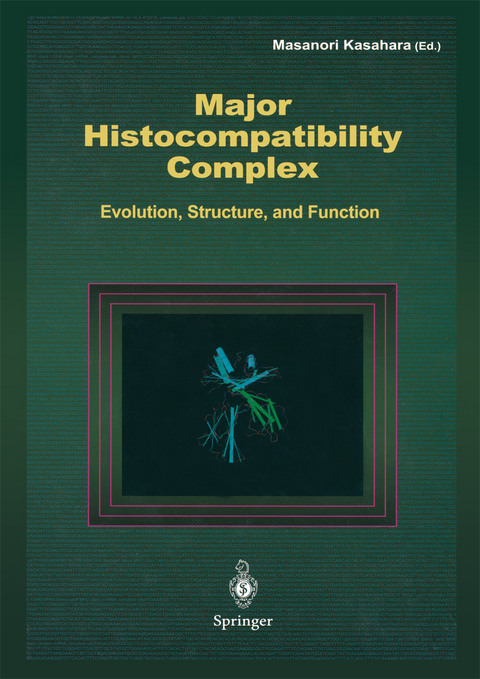
Major Histocompatibility Complex
Springer Verlag, Japan
978-4-431-65870-2 (ISBN)
Origin of the MHC.- Jaws and AIS.- The MHC paralogous group: listing of members and a brief overview.- The MHC « Big-Bang » : duplication and exon shuffling during chordate evolution. A hypothetico-deductive approach.- Relationships among the genes encoding MHC molecules and the specific antigen receptors.- Conserved linkage among sea urchin homologs of genes encoded in the vertebrate MHC region.- Genome organization of the MHC.- Physical mapping of the class I regions of the rat major histocompatibility complex.- MHC gene organization of the bony fish, medaka.- Polymorphic olfactory receptor genes and HLA loci constitute extended haplotypes.- Distribution of polypurine/polypyrimidine tract sequences in the human MHC region and their possible functions.- Potential for paralogous mapping to simplify the genetics of diseases and functions associated with MHC haplotypes.- Transposable elements and the metamerismatic evolution of the HLA class I region.- Polymorphism in the HLA class I region.- Nucleotide diversity within the human major histocompatibility complex: function of hitchhiking effect, duplications, indels and recombination.- Function and evolutionary dynamics of MHC genes.- Proteasomes and MHC class I-peptide generation.- Comparative aspects of the MHC class I-related MR1, CD1D, and MIC genes in primates.- Rat TL and CD1.- Are chicken Rfp-Y class I genes classical or non-classical?.- Xenopus class I proteins.- Two MHC class II A loci in the channel catfish.- The evolution of MHC class I genes in cattle.- Evidence for four functional DQA loci in cattle with distinct distributions amongst European and African populations.- Natural killer gene complex.- The NKC and regulation of natural killer cell-mediated immunity.- MHC-pathogen coevolution.- Manipulation ofMHC-encoded proteins by cytomegaloviruses.- An animal model for understanding the immunogenetics of AIDS virus infection.- MHC polymorphism.- Evolution of HLA-DRB loci, DRB1 lineages, and alleles: analyses of intron-1 and -2 sequences.- The non-coding regions of HLA-DRB uncover inter-lineage recombinations as a mechanism of HLA diversification.- Conversion or convergence? Introns of primate DRB genes tell the true story.- Intron 1 sequence analysis of the MHC-DRB1, 3, 4, 5, and 6 genes in five non-human primate species.- Evolution of Catarrhini DPB1 exon 2 under intragenic recombination.- The effect of mutation, recombination and selection on HLA non-coding sequences.- HLA-DQ haplotypes in 15 different populations.- HLA class I and class II loci in Pacific/Asian populations.- HLA class I alleles in Australian aborigines and their peptide binding profiles.- An evolutionary overview of the MHC-G polymorphism: clues to the unknown function(s).- MIC-A polymorphism and a MIC-A-MIC-B null haplotype with ~ 100-kb deletion.- Repertoire forecast of MHC class I binding peptides with peptide libraries.- Sequence conditions for gene conversion of mouse MHC genes.- Mhc class II genes of Darwin’s Finches: divergence by point mutations and reciprocal recombination.- Contrasting patterns of MHC and microsatellite diversity in social and solitary tuco-tucos (Rodentia: Ctenomyidae).
| Zusatzinfo | 4 Illustrations, color; 86 Illustrations, black and white; XXIII, 561 p. 90 illus., 4 illus. in color. |
|---|---|
| Verlagsort | Tokyo |
| Sprache | englisch |
| Maße | 210 x 297 mm |
| Themenwelt | Studium ► Querschnittsbereiche ► Infektiologie / Immunologie |
| Naturwissenschaften ► Biologie ► Zellbiologie | |
| ISBN-10 | 4-431-65870-X / 443165870X |
| ISBN-13 | 978-4-431-65870-2 / 9784431658702 |
| Zustand | Neuware |
| Haben Sie eine Frage zum Produkt? |
aus dem Bereich


